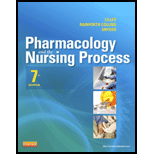
To discuss:
The normal functions of the pancreas.
Concept introduction:
The pancreas is an elongated, large organ that is located in adjusting to the stomach. It has both endocrine and exocrine glands. The endocrine functions of the pancreas are used to regulate the
Explanation of Solution
The functions of the pancreas:
Pancreas role as a dual function in the regulation of metabolism and digestive system. The endocrine function is control by the two hormones such as insulin and glucagon are produced by the pancreas. Both hormones play an important role in the carbohydrate metabolism. These two hormones are needed to maintain the normal blood glucose level.
Insulin is an endocrine hormone that decreases the blood glucose level that is produced in the beta cells of Langerhans.
- Insulin stimulates the uptake of glucose to the body cells to provide energy.
- It stimulates lipogenesis and inhibits the lipolysis in adipose tissues.
- It stimulates the protein synthesis.
- The intracellular shift of magnesium and potassium is promoted into the cells, so that insulin decreases these electrolytes concentration in the blood.
- Insulin is important in transferring glucose to glucose-6-phosphate, it favors the glycogen synthesis. Hence, the blood glucose level is maintained as normal.
Glucagon
- Glucagon plays a main role in increasing blood glucose concentration by inhibiting the action of insulin. Glucagon is produced in alpha cells of Langerhans.
- Glycogen is converted into glucose by glucagon when blood glucose concentration is below than normal in the blood.
- Glucagon has fewer effects on the muscle glycogen and triglycerides (present in adipose tissues).
The main role of glucagon is on the liver glycogen, in the process of glycogenolysis.
The endocrine function in the pancreas is done by insulin and glucagon to maintain the normal blood glucose concentration. The digestive enzymes such as proteases, amylase, and pancreatic lipase are also produced in the pancreas to do exocrine functions in the human body.
The endocrine and exocrine functions of the pancreas help to regulate the metabolic and digestive functions.
Want to see more full solutions like this?
Chapter 32 Solutions
Pharmacology and the Nursing Process
- Define obstetric emergencies and state and briefly explain any two (2) maternal, foetal, and obstetric complications that require immediate intervention.arrow_forwardExplain how mental health services can be effectively integrated into maternal and child health, visa-viz early childhood development.arrow_forwardEnumerate any four (4) potential complications during puerperium and highlight key measures to manage these complications.arrow_forward
- Describe the physiology of the first stage of labour.arrow_forward58. Consider the circuit shown below. Find 11, 12, and I3 when (a) the switch S is first closed, (b) after the currents have reached steady-state values, and (c) at the instant the switch is reopened (after being closed for a long time). 1 R1 ww 13 12 E S 0000 ww R2arrow_forwardRegularity- Rate- P waves- PRI- QRS- Interpretation- Normal sinus rhythm, sinus bradycardia, sinus tachycardia, sinus arrhythmia, sinus pause, sinus arrest, normal sinus with PACs, atrial fibrillation, atrial flutter, multifocal atrial tachycardia, wandering atrial pacemaker, supraventricular tachycardia, junctional rhythm, accelerated junctional rhythm, junctional tachycardia, premature junctional complex, premature ventricular complex, ventricular tachycardia, ventricular fibrillation, idioventricular rhythm, accelerated idioventricular rhythm, asystole, first-degree AV block, second-degree AV block type I (Wenckebach), second-degree AV block type II (Mobitz II), third-degree AV block (complete heart block), bigeminy, trigeminy, quadrigeminy, couplet,somatic tremor,AC interference,wandering baseline and etc (answer correctly using the 5 step method and only use those terms above)arrow_forward
- 76. 80. 81. 82. 83. 33arrow_forward69. 70. 71. 72. 73. 74.arrow_forward63. 64. 65. Rhythm: P wave: QRS Complex: Rate: PRI: Interpretation: Rhythm: P wave: QRS Complex: 66. 67. 68. Rhythm: P wave: QRS Complex: Rhythm: P wave: QRS Complex: Rate: PRI: Interpretation: Rate: PRI: Interpretation: Rate: PRI: Interpretation:arrow_forward
- 59. 57. 60. 62. 55. سلسلہ ་་་་arrow_forward• Define the first stage of labour. • Describe the physiology of the first stage of labour. • Enumerate any four (4) potential complications during puerperium and highlight key measures to manage these complications.arrow_forward• Define obstetric emergencies and state and briefly explain any two (2) maternal, foetal, and obstetric complications that require immediate intervention. • Explain how mental health services can be effectively integrated into maternal and child health, viz-a-viz early childhood development. • Enumerate any four (4) foetal malpresentations in pregnancy and briefly explain their implication in labour while also highlighting their causes and possible complications.arrow_forward
 Phlebotomy EssentialsNursingISBN:9781451194524Author:Ruth McCall, Cathee M. Tankersley MT(ASCP)Publisher:JONES+BARTLETT PUBLISHERS, INC.
Phlebotomy EssentialsNursingISBN:9781451194524Author:Ruth McCall, Cathee M. Tankersley MT(ASCP)Publisher:JONES+BARTLETT PUBLISHERS, INC. Gould's Pathophysiology for the Health Profession...NursingISBN:9780323414425Author:Robert J Hubert BSPublisher:Saunders
Gould's Pathophysiology for the Health Profession...NursingISBN:9780323414425Author:Robert J Hubert BSPublisher:Saunders Fundamentals Of NursingNursingISBN:9781496362179Author:Taylor, Carol (carol R.), LYNN, Pamela (pamela Barbara), Bartlett, Jennifer L.Publisher:Wolters Kluwer,
Fundamentals Of NursingNursingISBN:9781496362179Author:Taylor, Carol (carol R.), LYNN, Pamela (pamela Barbara), Bartlett, Jennifer L.Publisher:Wolters Kluwer, Fundamentals of Nursing, 9eNursingISBN:9780323327404Author:Patricia A. Potter RN MSN PhD FAAN, Anne Griffin Perry RN EdD FAAN, Patricia Stockert RN BSN MS PhD, Amy Hall RN BSN MS PhD CNEPublisher:Elsevier Science
Fundamentals of Nursing, 9eNursingISBN:9780323327404Author:Patricia A. Potter RN MSN PhD FAAN, Anne Griffin Perry RN EdD FAAN, Patricia Stockert RN BSN MS PhD, Amy Hall RN BSN MS PhD CNEPublisher:Elsevier Science Study Guide for Gould's Pathophysiology for the H...NursingISBN:9780323414142Author:Hubert BS, Robert J; VanMeter PhD, Karin C.Publisher:Saunders
Study Guide for Gould's Pathophysiology for the H...NursingISBN:9780323414142Author:Hubert BS, Robert J; VanMeter PhD, Karin C.Publisher:Saunders Issues and Ethics in the Helping Professions (Min...NursingISBN:9781337406291Author:Gerald Corey, Marianne Schneider Corey, Cindy CoreyPublisher:Cengage Learning
Issues and Ethics in the Helping Professions (Min...NursingISBN:9781337406291Author:Gerald Corey, Marianne Schneider Corey, Cindy CoreyPublisher:Cengage Learning





